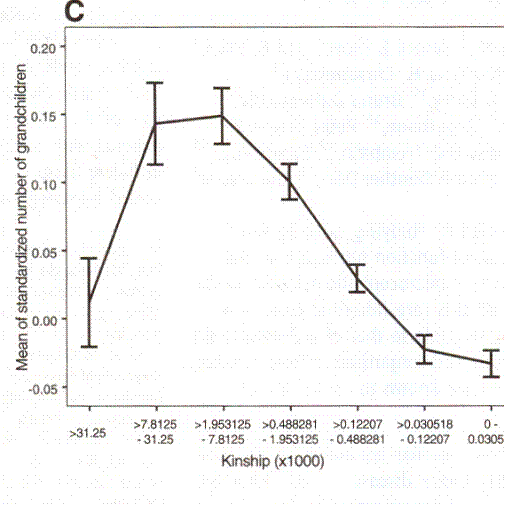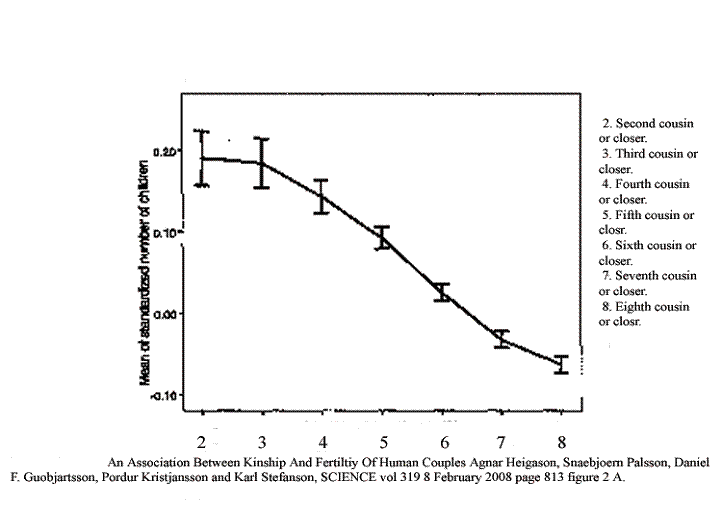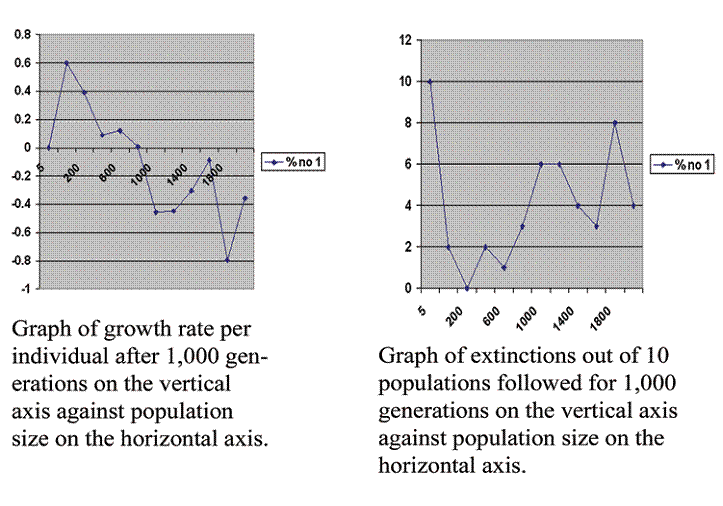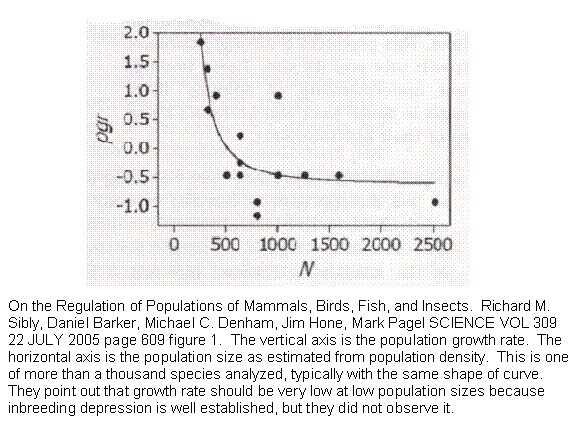
An Association Between Kinship And Fertility of Human Couples. Agnar Helgason, Snaebjoern Palsson, Daniel F. Guobjartsson, Pordur Kristjansson and Karl Stefanson, SCIENCE vol 319 8 February 2008 page 813 figure 3 C.
September 27, 2011
Philippine Vergeer
Hugens Building
Room HG 01.132
Radboud University Nijmegen
Molecular Ecology
Heyendaalseweg 135
6525 AJ Nijmegen
The Netherlands
p.vergeer@science.ru.nl
Dear Philippine Vergeer:
I read the review of your work in SCIENCE (Elizabeth Pennisi Epigenetics Linked to Inbreeding Depression SCIENCE vol. 333 no. 6049 September 16, 2011 page 1563) I am thunderstruck. I should have suspected as much, but even knowing what I am about to tell you I suspected nothing. I would have said, “Inbreeding depression happens because there is something called heterozygote advantage, which has the effect of giving an advantage to any organism that has a wide variety of genes.” I’m sure you have run into that one before. It is what everyone says, and this time I believed “everyone,” now much to my regret.
What the review says you have done is to inbreed Scabiosa columbaria (in English, the Butterfly Blue garden flower or less appealingly the small scabious) until there was evident inbreeding depression and then treat the seeds with a chemical that removes methyl groups from DNA, thus switching off much of the epigenetic control of their genes. The result was that the inbreeding depression went away. (You also found that methylation was higher in inbred plants and that inbred and outbred plants had different parts of their genomes methylated. I am still pondering that observation, but let’s stay with the simple stuff.)
Wow. I agree with Oliver Bossdorf (University of Bern, Switzerland), when he says this calls for a rethink of the extremely important concept of inbreeding depression. But there is more to it. A lot more.
You see, inbreeding depression and outbreeding depression are a continuum.
A team in Iceland did a study in which they compared the kinship of parents (they went back ten generations and counted how many ancestors they had to determine kinship rather than the traditional way) with the number of offspring their children had. What they got was this:

An Association Between Kinship And Fertility of Human Couples. Agnar Helgason, Snaebjoern Palsson, Daniel F. Guobjartsson, Pordur Kristjansson and Karl Stefanson, SCIENCE vol 319 8 February 2008 page 813 figure 3 C.
The curve was quite similar when they looked at the number of children a couple had, the more kinship to more children, but as you see with grandchildren, there is an optimal area where there are the most grandchildren. More kin and less kin alike show a decrease in fertility. Here is the curve for children, but it is a bit off current topic:

With grandchildren, inbreeding depression is evident, as is outbreeding depression within a very few generations. This fall in fertility with fall in kinship happens so fast that it must be due to epigenetic effects. DNA just does not mutate fast enough to have such an effect in seven generations.
In fact, some years ago, I wrote a computer program that modeled a population over multiple generations under the influence of post-zytgotic infertility. I looked at average number of offspring per individual at equilibrium for populations of different sizes.
Here is what I got:

When the population is very small, there is a significant chance of its going extinct. This chance falls as the population is kept at a larger size. Then it rises again. So in effect we have both inbreeding and outbreeding depression mediated by a single mechanism. I am sure of that much. I wrote the program.
So I already thought oubreeding depression was caused by an epigenetic mechanism, and I cannot fathom how I was so stupid as not to say, all right, inbreeding depression must be as well. But you have now proven it in a plant. And as far as I am concerned you have proven that outbreeding depression is epigenetic as well.
Of course outbreeding depression is as unheard of as inbreeding depression is well known. But the Iceland data leaves no doubt. In case you think this is something different about people, here is a graph from a study that amassed over 1,000 serial field counts of animals and compared growth rate with population size.

Same old curve. It’s enough to make you queasy, particularly when you think of all the nice people out there who are marrying people who are less kin than 7th cousin and thinking they are doing their children a favor, while at the same time this strategy has plunged the developed world into profound infertility.
There are many fascinating things you could do next. I think an easy and exciting one would be to see if you can elicit inbreeding depression in fruit flies and then reverse it with your demethylation process. Fruit flies are easy to raise and do not complain much more than flowers. Proving the same effect in animals should get a lot of attention.
Whether it is possible to go on and demonstrate that outbreeding depression is similarly due to an epigenetic mechanism is problematic, but might be possible. For years I have thought of trying that myself, but my resources are limited and what would be a trifle for you is probably beyond me. Still, if it is true, it is high time we knew and told the world.
Thank you for doing such stimulating work. I hope this goes far.
Sincerely,
M. Linton Herbert MD
There have been 25,945 visitors so far.